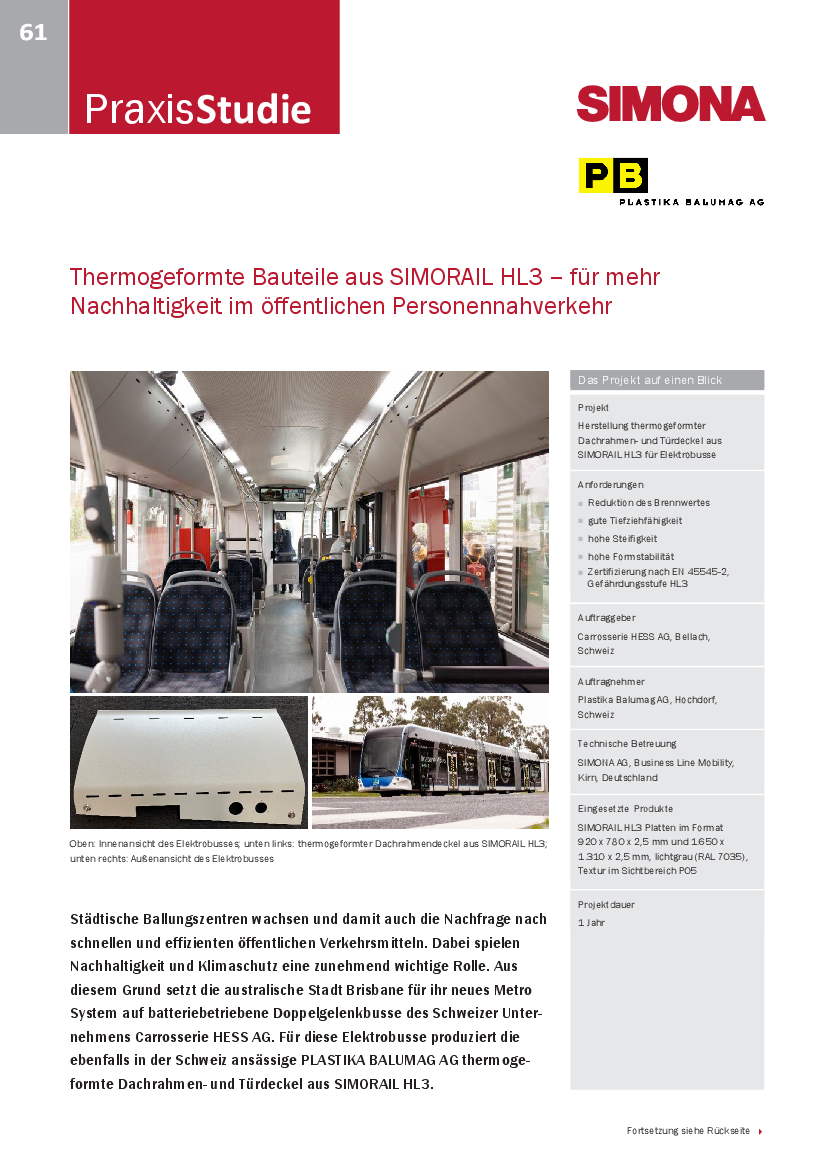Thermoformed components made of SIMORAIL HL3 – for greater sustainability in local public transport
Products
SIMORAIL HL3 – light, durable and 100% recyclable
Initial situation
Brisbane is considered the fastest growing city in Australia, with two-thirds of public transport passengers using buses. The existing transport network is increasingly operating close to capacity. The city has set itself the goal of sustainable growth, including emission-free mobility. With a fleet of 60 battery-powered lighTram® 25 TOSA electric buses supplied by Carrosserie HESS AG, Switzerland, Brisbane Metro aims to build an all-electric public transport system linking the city centre with the suburbs.
Task
Due to the exacting regulatory standards implemented by the City of Brisbane in respect of fire protection in public vehicles, HESS was faced with the task of improving the flammability properties of materials conventionally used in their buses. With this requirement in mind, the company turned to PLASTIKA BALUMAG, a company specialising in thermoformed components for vehicles, among other things. As the roof frame and door covers represent the largest part of the interior panelling in terms of surface area, adapting the materials of these components offered the greatest potential for reducing flammability levels.
The focus was on finding a material with low flammability that met the certification requirements of EN 45545-2 at hazard level HL3. In addition, the material had to have good thermoforming properties and combine a high degree of rigidity with dimensional stability. PLASTIKA BALUMAG also wanted to ensure that the new material would necessitate as few changes as possible with regard to existing processes and tools.
Solution
In SIMORAIL HL3 sheets, PLASTIKA BALUMAG found a product that met the above-mentioned requirements not only with regard to fire protection standards but also in terms of thermoforming properties. The thermoforming machine only required minor adjustments to specific parameters for the manufacture of roof frame and door covers in line with existing processes. In addition, the high rigidity and dimensional stability of the material meant that the initial thickness of 3.5 mm could be reduced to 2.5 mm. Given the large surfaces involved, this not only produced considerable cost savings but also a significant reduction in the weight of the bus, which is a key benefit in environmental terms.
The pilot bus arrived in Brisbane in April 2022. Following successful testing, a further 59 e-buses are now to be added to the fleet and are expected to be put into service by the end of 2024.
 Exterior view of the electric bus
Exterior view of the electric bus
 Interior view of the electric bus
Interior view of the electric bus
 Thermoformed roof frame cover made of SIMORAIL HL3
Thermoformed roof frame cover made of SIMORAIL HL3
 SIMORAIL HL3 sheet
SIMORAIL HL3 sheet

